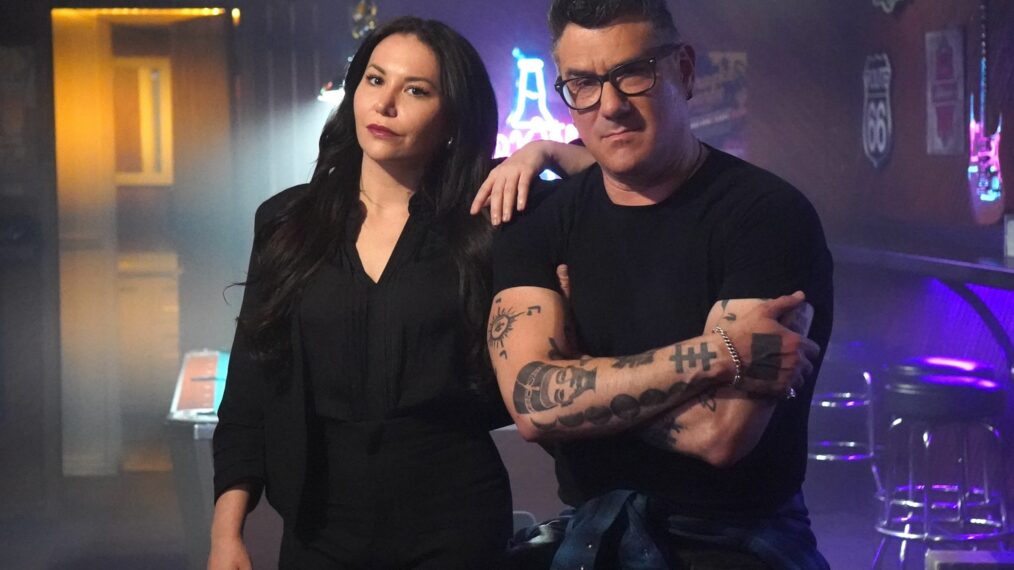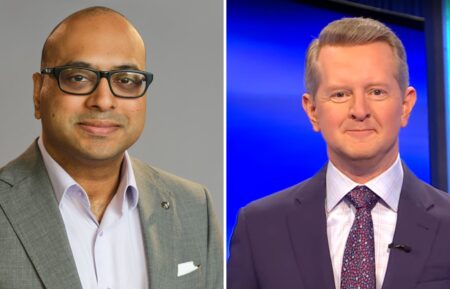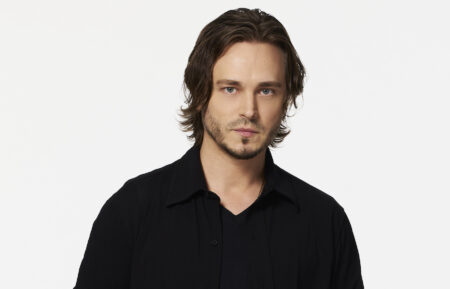‘In the Eye of the Storm’: Storm Chaser Talks Reality of Being Trapped in a Tornado

Q&A
Batten down the hatches and brace yourself for In the Eye of the Storm. Discovery’s new series brings viewers inside some of the wildest weather and deadliest natural disasters as they happen in real time. This is thanks to footage captured by eyewitnesses, many of whom revisit these intense, and for some, traumatic experiences.
The premiere episode, “Trapped in a Twister,” delves into a rare tornado outbreak in the Midwest last year. A trail of devastation was left in Rolling Fork, Mississippi, Little Rock, Arkansas, and Cole and Shawnee, Oklahoma. Tanner Charles, a storm chaser, found he and a group of tornado spotters got more than they bargained for when a twister hit Lewistown, Illinois. By the time the car full of friends realized they were inside the tornado, it was too late.
Here, Charles opens up about what he went through and how it changed his life forever.
How did you come to be part of the show?
Tanner Charles: When I released the tornado footage, it was in October. I actually waited six months before releasing the footage of what happened on April 4. Me and the other guys wanted time to understand what exactly happened to us. We took a break from storm chasing. The footage is pretty traumatic. We didn’t just want to put it out there for everyone to see without a plan involved. There were definitely conversations about not even showing the footage to anyone. We knew the footage would get a lot of traction. So, are we ready to handle that kind of attention mentally? After releasing the footage, Discovery saw it and contacted me through email saying they wanted to work on this show. I talked it over with the guys. They didn’t want to be interviewed, but I said I would be down for it and go through the process.
Why did you decide to participate?
I think it’s just important for people to understand the context of what happened. It’s not every day people go through something like this. I think people could learn a thing or two about how people go through trauma. Also, it gave me an opportunity to talk about what I went through on a deeper level. Also, I’m a Christian and believe God definitely had a part in protecting us in all of this. It’s also a platform to speak more about that.

Tanner Charles/Discovery Channel
What did you take from reliving the experience?
It was about processing a few things. After six months, there are other things you think more deeply about. After releasing the footage, there was stuff I never really considered. The community may bring things up that I didn’t think about. Why did I make a particular decision? After the interview, I almost wish I could go back and redo all my interviews only because I have so much more clarity on the situation—not that there was new information, but there is more understanding of the context of what happened.
A couple of days after you went through that twister, you found yourself in the aftermath of another storm helping rescue an elderly couple who basically had their home leveled.
That whole week was insane. Both of those events happened within four days of each other. March 31 and April 4. After the events of March 31 where I helped an elderly couple, it wasn’t like I was ready to quit or ready to take a break from storm chasing. It was a reality check, which I think is really healthy, having them in my car and picking them up and waiting for the ambulance while comforting them. It was a really good reality check of how these things can affect people.
I never want to chase the hype of it. I’m always ready to help if I need to. A lot of storm chasers struggle. We’re just so addicted to this type of thing that we often don’t think about the humanity of it all and continue chasing. I can safely say I worked on that over the years. March 31, I showed that. I just want to love people and help them in those situations. After that experience, I processed it and stayed in contact with the family and made sure they were okay. It was a good reality check.
What was the thought process going into the next chase?
On April 4, I decided to not lead the chase but sat in the backseat. I like to get up close and personal with tornados within reason. I guess that is my kind of reasoning for risk. The guys I was with have had years of experience, but they like to lay back. Sitting there in the back of my friend’s car, I wanted to record everything for recap videos. Situational awareness and a rapidly changing environment can really shift your perspective, which would happen to us. We thought about whether we were going to cut through the eye of the storm and hop on the other side and see this tornado or just let the storm pass by and go home empty-handed.
During the decision, in the hail, we decided to go for it. We thought we could make it through safely. You then have this view of this massive supercell with an ongoing tornado at the bottom of it. The funnel was halfway through the ground, but there was clearly debris swirling on the ground. We were pretty hyped. I did not expect to get up close and personal that day. With some of the decisions we all made together, it just happened that was the case.
What was life after like?
For me, after that whole week, I definitely had a good month-and-a-half of storm chasing, which is a bigger deal than it seems. I let myself feel. I got to talk with the mentors in my life. What happened wasn’t public information yet until October. Only a handful of my storm-chasing friends and close friends knew what happened. Sometimes you don’t get that luxury. The roads were blocked on both sides of us, so there was only a cop or two that came by afterward.
There were no photos on the internet or video. We were able to take as much time as we needed before coming out with a statement of what happened and having the footage out. I made sure to process as much as I could. I met with the guys, and we processed together. Some of the guys had more of an intense experience as far as trauma. One of the guys went through some therapy for a couple of months. We were good after a while. A couple of months later, all of us were chasing storms again, but with a fresh new perspective. There is this extra layer of caution now, which I think is really good.
A show like this is important because you watch Twister and have Twisters coming out, which brings the Hollywood presentation. This brings the reality of all to the forefront.
Absolutely. I think it’s important for people to see it in real time. Even though you have years of experience like my friends and I do, things can happen.
In The Eye of the Storm, Premiere, Sunday, July 14, 10/9c, Discovery Channel (Streaming on Max)









